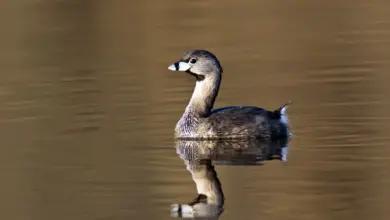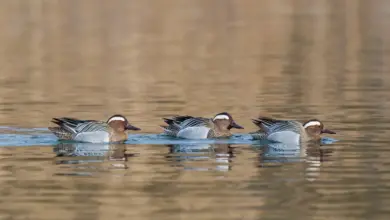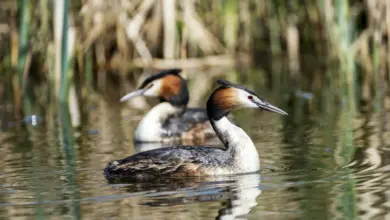Darters Or Snakebirds (Anhinga novaehollandiae)
Darters
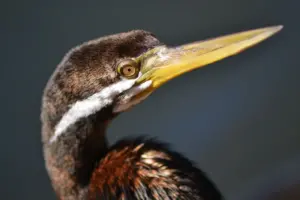
Darters are a remarkable group of aquatic birds that hold an important place in the avian world. These agile fish-eating birds display a number of unique adaptations that enable them to thrive in watery environments across the globe.
Darters are distinguished by their slender, serpentine necks, pointed bills, and strongly webbed feet which aid their piscivorous lifestyle. They exhibit diverse plumage patterns and colors that camouflage them in water while also serving in courtship displays.
Darters populate freshwater lakes, rivers, and wetlands where they nest and raise their young. These birds play a vital ecological role as top predators, influencing food webs in the diverse aquatic habitats they occupy. Over time, different darter species have evolved through natural selection to fill specific niches in various aquatic ecosystems.
However, habitat destruction and other threats have put some darters at risk, highlighting the need for increased conservation attention to protect these unique birds. This article will delve into the biology, natural history, and conservation outlook for darters – intriguing avian specialists of watery realms worldwide.
Scientific Name: Anhinga novaehollandiae
Evolution and Taxonomy
Darters belong to the taxonomic order Pelecaniformes, which contains pelicans, cormorants, gannets, and other waterbirds. They comprise the family Anhingidae, which includes four living species placed within the single genus Anhinga.
Darters are most closely related to cormorants, which they diverged from around 50 million years ago during the Eocene epoch. From common ancestral species, darters and cormorants separately adapted to become highly specialized for pursuing fish underwater.
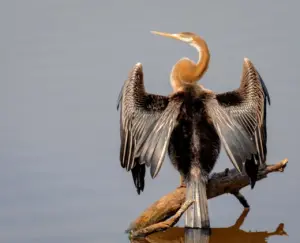
Over millions of years, natural selection honed the anatomy and morphology of darters for their unique piscivorous niche. Their elongated, S-shaped necks allow swift strikes to grab fish.
Strongly webbed feet and streamlined bodies are excellent adaptations for swimming and diving after prey. Hybridization between ancestral lineages likely also contributed to the evolution of darters. Present-day darters appear remarkably adapted to efficiently catch and handle slippery fish underwater.
Modern darters display some physical and behavioral similarities with cormorants, reflecting their shared ancestry. However, darters are more aerial and less aerial than cormorants.
Darters also have sharper beaks and much more elongated necks compared to their closest relatives. Accumulated genetic changes over time led to the evolutionary divergence producing today’s darter and cormorant lineages from common forebears.
Fossil Record
The fossil record provides insights into the prehistoric evolution of darters. Well-preserved darter fossils date back to the Oligocene and Miocene epochs around 30-15 million years ago. Primitive ancestral species had stouter necks and less hooked bills compared to modern darters.
Fossils trace the incremental evolution of key adaptations like neck elongation and foot webbing over millions of years. Hybridization of diverging lineages likely contributed to this gradual evolution. Analyses of fossil deposits from diverse time periods and environments shed light on the origins of today’s darters.
Molecular Phylogenetics
Molecular genetics and DNA sequencing techniques also help clarify darter evolution. Phylogenetic analyses reveal how current darter species are related based on shared mutations and genetic similarities. These genetic relationships often align with the morphological and behavioral similarities between species.
Comparing DNA across darter diversity elucidates how genetic variations arise and are passed on over time. Tracking genetic changes provides insights into the evolutionary splits producing distinct darter lineages adapted to unique aquatic environments and ecological niches.
Distribution and Habitat
Darters inhabit freshwater wetland environments across much of the Americas, Europe, Africa, Asia, and Australia.
They prefer shallow, productive lakes, slow rivers, marshes and estuaries where fish are abundant. Darters soar over these aquatic areas but require dead trees in the water or along shorelines for nesting sites. They avoid fast moving rapids and open oceans.
Different darter species are found in particular wetland habitats on each continent – for example, the Andean darter among lake chains in the Andes Mountains, the African darter in tropical sloughs and floodplains, or the Australasian darter along northern Australian river systems.
However, the range of some species expands and contracts based on climatic conditions and water levels. Overall, the broad yet selective habitat use of darters allows them to thrive across diverse global wetlands.
Migratory Patterns
Most darters reside year-round in the wetland habitats where they breed. However, some populations exhibit seasonal migratory movements tracking changes in weather and prey abundance. Andean darters migrate downslope during cold high-altitude winters.
African darters disperse across the Sahel following episodic floods that spread fish populations. Darter migratory patterns are typically shorter and more irregular than those of long-distance migratory birds, but allow them to exploit ephemeral resources across a range of wetlands.
Physical Characteristics
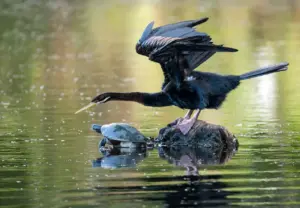
Darters exhibit a number of anatomical and morphological adaptations that suit them for pursuing fish and living in aquatic environments.
Plumage and Coloration
Darters display diverse plumage patterns and colors that help camouflage them in water while also aiding mate attraction. Breeding males have striking pigments and ornamentation used in courtship displays to entice females. Female plumage is more subdued and cryptic to better conceal incubating birds. Darters’ feathers are water-resistant and layered to provide insulation while swimming. Melanins, carotenoids, and structural feather elements produce their colors.
For example, Andean darters of South America have dark blackish feathers with white spotting resembling lichen covered rocks in their mountain stream habitats. African darters have deep chestnut neck feathers and drab gray-brown patterns that disappear among aquatic vegetation along the shorelines of tropical lakes and rivers where they hunt.
Male Australasian darters develop a pinkish-chestnut breast and metallic greenish sheen along the neck during the breeding season. The diversity of darter plumage patterns reflects their broad distribution and adaptations to specific aquatic environments worldwide.
Pigmentation
The colors exhibited in darter plumage stem from two main types of pigments – melanins and carotenoids. Melanin pigments are synthesized internally and produce blacks, grays, browns, and rusty-red hues. Carotenoid pigments are acquired through the diet and create bright yellows, oranges, and reds.
These pigments are deposited into developing feathers by birds. The combination and patterning of melanins and carotenoids generate the diverse plumage elements used in darter camouflage and communication.
Molt Patterns
Like other birds, darters periodically molt and replace their feathers. Molting patterns vary across darter species and environments. Tropical darters may molt continually, while higher latitude species undergo one or two annual molts.
New, brighter feathers are grown before breeding. Molting is energetically expensive and makes birds more vulnerable, so timing molts with seasonal conditions is beneficial. The regeneration of feathers through molting enables darters to maintain their intricate plumage patterns.
Long Neck and Sharp Beak
The elongated neck of darters is a key adaptation aiding their piscivorous habits. Measuring up to 5 times the length of their body, their supple neck allows them to strike at fish while swimming.
Vertebrae in their neck are more loosely connected and flexible than other birds, enabling them to snake their neck outward with lightning speed to grab prey. Powerful neck muscles anchor the base of their neck for these rapid fishing strikes.
Their long, pointed beak ends in a sharp hook perfect for impaling slippery fish. Together with their lengthened neck, this beak allows darters to grab fish from extended distances compared to most other water birds. Inside their mouth, rearward facing spines help them securely hold captured fish. This specialized anatomy enables darters to effectively hunt fish underwater.
Skeletal Adaptations
The darter skeleton displays several unique adaptations related to their piscivorous habits and aquatic lifestyle:
- Extreme neck elongation maximizes striking distance. Loose intervertebral connections allow greater flexibility.
- Flattened breastbone and strengthened hip joints aid underwater propulsion.
- Robust shoulder bones provide anchoring for powerful flight muscles.
- Skull bones are fused for strength when spearing and grasping fish.
- Dense, solid bones reduce buoyancy, facilitating diving.
These specialized skeletal features enable darters to thrive as underwater fish hunters.
Behavior and Habitat
Darters exhibit a range of behavioral adaptations related to their piscivorous lifestyle, breeding ecology, and the diverse aquatic habitats they occupy worldwide.
Feeding Habits
Feeding almost solely on fish, darters are consummate underwater predators. They employ a technique known as “hover foraging” where they swim in place with just their neck extended vertically down to spot potential prey below.
Once suitable fish approach within striking distance, darters spear them with their sharp beak and may submerge completely to retrieve the prey. Alternatively, they may plunge dive from the air into the water to surprise and capture fish swimming near the surface.
Darters are able to catch fast agile fish including mullet, silversides, trout, and even piranha. They handle slippery prey by maneuvering it into position to be swallowed headfirst. An expandable throat pouch allows them to swallow fish nearly half their own size.
After feeding, darters often perch with wings spread to dry their damp plumage. Their varied fish-hunting strategies demonstrate the remarkable adaptations that make darters such effective aquatic predators.
Dietary Preferences
Different darter species exhibit specialized dietary preferences and hunting techniques tailored to their aquatic habitats. African darters skew towards surface feeding on schooling fish like tetras in slow moving rivers and wetlands. Andean darters dive to greater depths to pursue larger prey fish like rainbow trout in deep Andean lakes.
Australian darters frequent shallow estuaries targeting mullet and other species adapted to variable salinity. The diversity of prey preferences helps partition resources and reduce competition between darter species across various wetland habitats.
Breeding and Nesting
Darters form long-term seasonal pair bonds for breeding, reinforced through elaborate courtship rituals. Males display their ornamental plumage patterns by stretching their necks and pointing their bills skyward. They also perform pendulum displays, rhythmically swinging their head and neck back and forth. If a female is receptive, she reciprocates and the pair bonds.
Monogamous pairs cooperate to construct nests high up in dead trees overhanging water. Both sexes gather sticks which males arrange as a platform. The female then lines the inner nest with fresh vegetation. Darters lay from 2 to 6 eggs which both parents incubate for 25-30 days until hatching. After hatching, adults continuously hunt fish which they regurgitate to feed the chicks until they fledge around 2 months old.
Darter pairs often return to the same nesting sites year after year. Their cooperation in nest building and raising offspring strengthens social bonds between mates. Adults vigorously defend nests from potential predators with loud croaking calls and by jabbing with their sharp beak.
Breeding Plumage
A key aspect of darter breeding biology is the development of striking breeding plumage in males. Vibrant colors and distinctive feather ornaments likely help males stand out to females during courtship.
For example, male Andean darters develop a prominent black ruff. Australasian darters grow elongated white flank plumes. African darters exhibit red facial skin and neck feathers. This breeding plumage signals fitness and stimulates females to choose ornamented males as mates.
Parental Roles
Darter parents share duties ranging from nest construction to chick rearing. However, some distinct parental roles exist. Males take the lead in selecting nest sites and gathering nesting materials, while females arrange interior nest lining.
Females alone incubate eggs, but males protect nests from potential threats. Both parents feed chicks through regurgitation, but females appear to spend more time directly brooding young. The shared duties strengthen pair bonding, while sex specific roles maximize reproductive success.
Ecological Roles
Darters play integral roles in freshwater ecosystems as predators, prey, and ecosystem engineers:
- As abundant predators, darters help regulate fish populations and transfer energy to higher trophic levels. A single darter can consume thousands of small fish daily.
- Different darter species partition resources based on microhabitat preferences, reducing interspecific competition between species. This allows diverse darter assemblages to coexist.
- Darters may improve habitat conditions by transporting nutrients between aquatic and terrestrial systems when they deposit guano and abandoned prey on land.
- As prey, darters provide food for larger fish, crocodilians, raptors, and other predators. Their productivity supports complex food webs.
- Darters are sensitive to pollution and habitat changes in wetlands, acting as indicators of ecosystem health. Their diversity reflects habitat quality.
- Nesting behaviors like clearing branches and constructing platforms influences vegetation structure and succession in aquatic zones.
In many ways, darters function as keystone species that have an influence on community structure and ecosystem function disproportionate to their size. Losing sensitive darter species can potentially disrupt wetland ecosystems.
Seasonal Behaviors
Darter behaviors change across the seasons based on factors like weather, prey availability, and breeding condition. During winter, darters migrate or disperse to find open, ice-free wetlands with adequate food. Their movements are aimed at locating areas where they can continue fishing through the winter months when many inland waters freeze over.
In early spring, darter pairs reunite and improve upon old nests or construct new nesting platforms. They repair and build up existing nests or gather sticks and vegetation to form new nests in preparation for breeding season.
Late spring brings courtship displays, pair bonding, egg laying and incubation. Males perform elaborate courtship rituals to attract returning females and cement pair bonds. Females lay eggs which both parents take turns carefully incubating until hatching.
Summers involve intense fish hunting to feed growing chicks until fledging. Adults continuously hunt to provide the abundant food needed to raise fast-growing chicks. By fall, offspring reach independence and migratory populations begin moving to wintering areas.
The young darters are now mature enough to migrate and fend for themselves when their parents leave breeding grounds for the winter. Their seasonal behavioral shifts optimize survival and reproduction.
Interactions with Other Species
Darters engage in important ecological interactions with various wetland species. They often compete with cormorants and herons for food resources within wetland habitats, sometimes leading to displacement or aggression between the birds over prime fishing areas.
Darters fall prey to a number of wetland predators, including snakes, raptors, crocodilians, and large fish that are able to capture the diving birds. Darters sometimes participate in commensal nesting associations with other waterbirds like herons, using joint nesting trees and cooperating in defense against predators.
As part of their nutrient transport between habitats, darters deposit guano and abandoned prey remains from aquatic systems onto land, benefiting riparian vegetation.
Through their nesting behaviors on vegetation over water, darters also influence habitat structure along wetland shorelines. Their key position in wetland food webs and communities makes darters important members of these globally significant ecosystems.
Conservation Status
Despite their wide distribution, darter populations face escalating threats from human activities:
Threats and Challenges
Major hazards to darters include wetland habitat degradation, water pollution, disturbance of nesting sites, and climate change impacts. Draining or filling of marshes and lakes destroys crucial foraging and nesting grounds. Pollution from agricultural runoff and industrial sources reduces water quality, and fish populations darters depend on for food.
Logging or development near wetlands can eliminate the dead trees needed for nest platforms. Extended droughts or severe storms due to climate change also threaten darters.
Invasive plant species like water hyacinths can choke lakes used by darters. Introduced fish that compete with native species or predators like Nile perch also pose risks. Overfishing by humans can further deplete the fish stocks darters rely on as prey.
Due to these mounting threats, three darter species are listed as Near Threatened and the Oriental darter is Endangered. Without conservation measures, their outlook remains tenuous as wetland loss accelerates globally.
Conservation Laws
Legal protections for darters and their habitats are limited but increasing in some regions. The Endangered Species Act covers listed darters like the endangered Oriental darter. Wetland conservation laws also preserve habitat in some cases.
For instance, the Ramsar Convention protects critical wetlands used by the Near Threatened Madagascar darter. Expanding and enforcing legal frameworks is important for darter conservation.
Conservation Efforts
Protecting remaining intact wetlands is critical for preserving darter populations. Restoring degraded wetlands, controlling invasive species, and managing wetlands as conservation areas can also help.
Riparian buffer zones around lakes and rivers maintain dead trees needed for nesting. Limits on fisheries reduce competition for prey fish stocks. Public outreach campaigns can build community support to safeguard local wetland ecosystems and darters.
Monitoring programs are needed to identify population trends and at-risk species. Captive breeding and reintroduction programs may aid recovery of the most threatened darters like the endangered Oriental darter. Sustainable management of aquatic habitats will be key for ensuring the persistence of darters and other wetland species.
Conclusion
Darters are remarkable aquatic birds exquisitely adapted to prey on fish across an impressive diversity of global wetland habitats. However, these unique birds now face escalating threats from human activities.
Their future depends on our ability to conserve remaining pristine wetlands and rectify degraded aquatic ecosystems. This will secure the survival of darters and provide vital wildlife habitat and ecological services that benefit human communities.
With appropriate protections, darters can continue thriving as essential components of healthy wetlands worldwide. But these iconic aquatic specialists urgently need increased conservation action before declines become irreversible.
The coming decades will determine whether these agile fish-hunting birds remain ubiquitous members of wetland environments or decline toward increasing rarity. With conscious stewardship of our shared aquatic resources, a future with flourishing darter populations can be assured.

